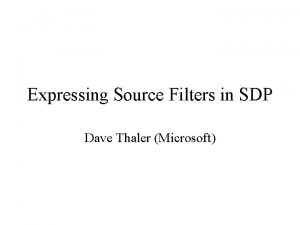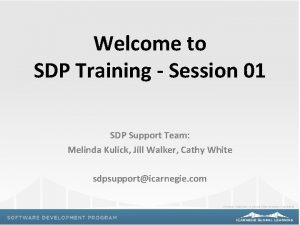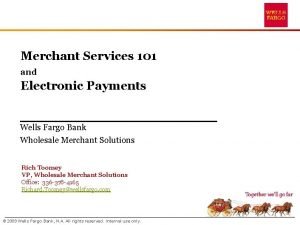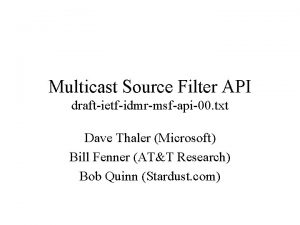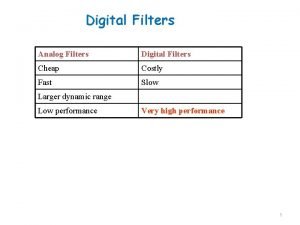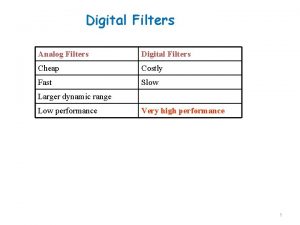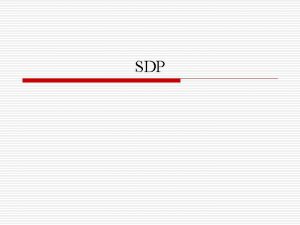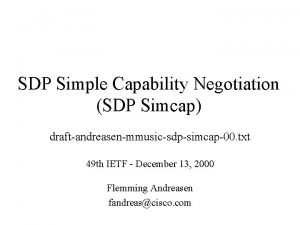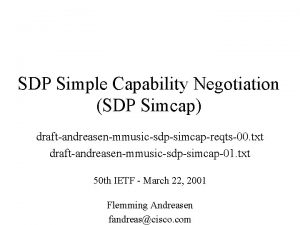Expressing Source Filters in SDP Dave Thaler Microsoft











- Slides: 11

Expressing Source Filters in SDP Dave Thaler (Microsoft)

Why? • Required for single-source sessions in 232/8 • ~Required for other Include-mode sessions • Exclusion list useful in some scenarios • Want app getting SDP to be able to translate into API calls (draft-ietf-idmr-msfapi-00. txt)

Extensibility Mechanisms • Option A: new address type – c= line currently contains address family & group address • Option B: new attribute – a=<attribute>: <value> – Receivers ignore a= if not understood – (c=, a=)* prohibited by SDP syntax

Option A: address type • Example: – c=IN IP 4 SF 224. 2. 17. 12/127 excl 1. 1 2. 2 • Not backwards compatible – Existing SDP receivers can’t understand – Seems to be problematic for exclude mode

Option B: attribute • Example: – c=IN IP 4 224. 2. 17. 12/127 – a=excl: IN IP 4 224. 2. 17. 12 1. 1 2. 2 • Backwards compatible – Existing SDP receivers ignore filter, join group • Result of ignoring unrecognized means legacy receivers may try to join 232/8 groups – No big deal?

Choose one? • Prefer single mechanism for both include/exclude mode – consistency – code reuse • Proposal: option B – a={incl, excl}: <network type> <address type> <connection address> ( <source> )+

Example 1: multi-source session, separate group address per source • • c=IN IP 4 232. 2. 17. 12/127 c=IN IP 4 232. 1. 2. 3/127 a=incl: IN IP 4 232. 2. 17. 12 1. 1 a=incl: IN IP 4 232. 1. 2. 3 2. 2

Example 2: multiple address types • • c=IN IP 4 224. 2. 17. 12/127 c=IN IP 6 FF 0 E: : 11 A/127 a=excl: IN IP 4 224. 2. 17. 12 1. 1 a=excl: IN IP 6 FF 0 E: : 11 A 2001: 210: 1: 2: 240: 96 ff: fe 25: 8 ec 9

Example 3: multiple groups with same filter • Example 3 a: group range – c=IN IP 4 224. 2. 1. 1/127/3 – a=incl: IN IP 4 224. 2. 1. 1 2. 2 • Example 3 b: independent groups, wildcard? – c=IN IP 4 224. 2. 1. 1/127 – c=IN IP 4 224. 2. 2. 2/63 – a=incl: IN IP 4 * 1. 1 2. 2

Limitations with used with SAP • “The text payload should be no greater than 1 Kbyte in length. ” • 40 bytes per IPv 6 address, 16 per IPv 4 address – assuming ~400 bytes for other stuff, 15 IPv 6 source addresses or 39 IPv 4 addrs fit w/o compression

Other source-specific considerations • Single-source session should have a=recvonly • CANNOT assume the reverse
